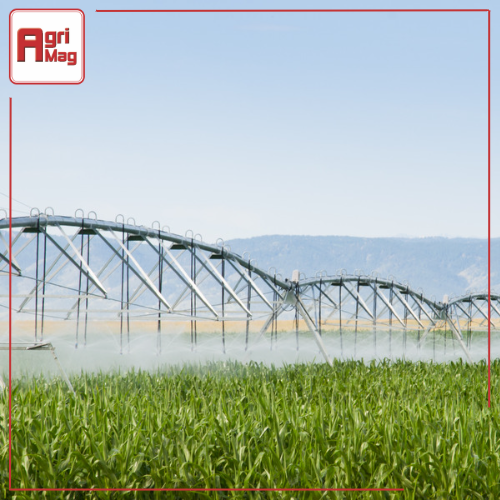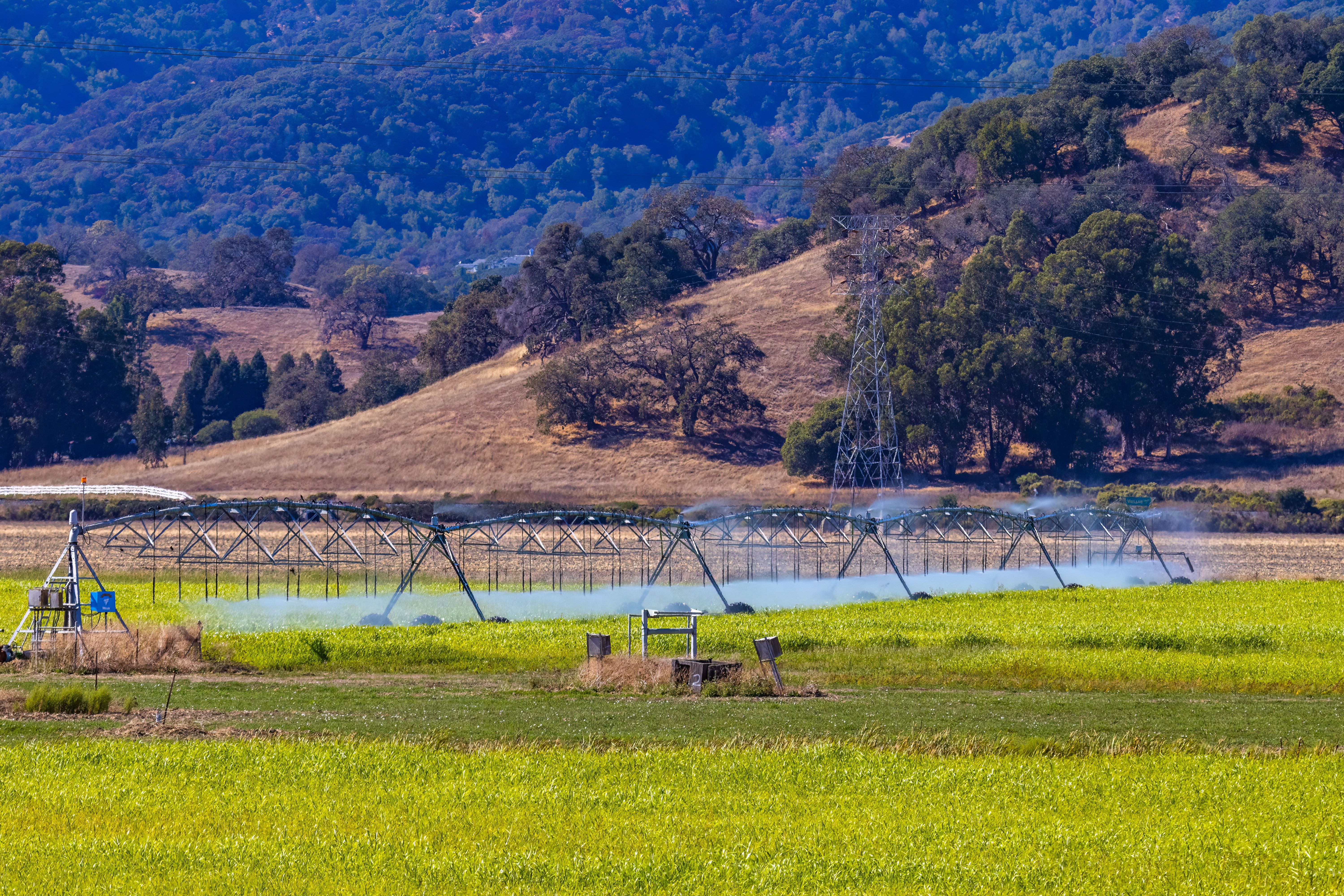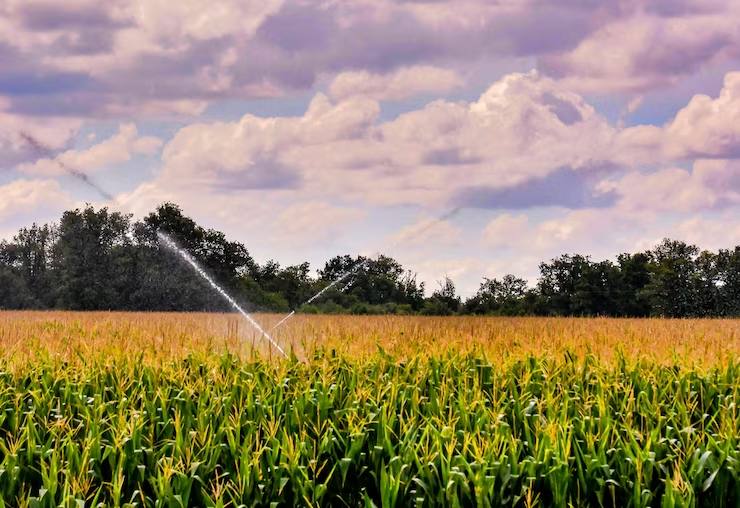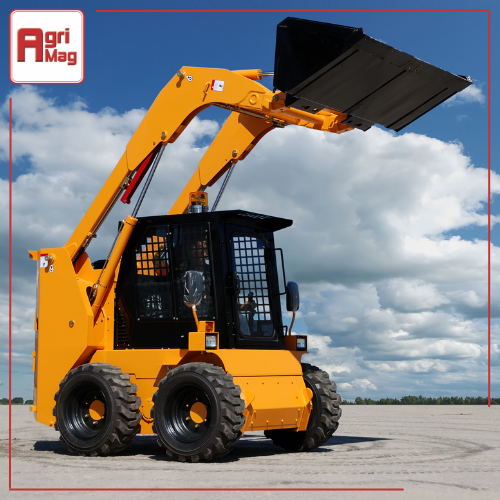
How to Set Up a Farm Irrigation System: A Guide for Farmers
Date: 15/06/2023
Do you know how to set up a farm irrigation system? When it comes to farming in South Africa, ensuring efficient water management is crucial for sustainable and successful agricultural practices. One of the most important components of a thriving farm is a well-designed and properly implemented irrigation system. Are you thinking about setting up your own system? Find irrigation for sale on AgriMag and get started today.
In this guide, we aim to help you establish an efficient farm irrigation system. Whether you're an experienced farmer or just starting out, we'll cover important factors to consider, various types of irrigation systems, and best practices for maximising water usage. By the end of this article, you'll have the knowledge you need to set up a successful irrigation system on your farm.
 Photo Source: Freepik
Photo Source: Freepik
A simple guide on how to set up a farm irrigation system
1. Assess Your Farm's Water Needs
Before diving into the technical aspects of setting up an irrigation system, it is essential to evaluate your farm's specific water requirements. Factors such as soil type, crop type, climate conditions, and available water sources play a vital role in determining the appropriate irrigation method. Conduct a thorough analysis of these variables to ensure a well-informed decision-making process.
2. Choose the Right Irrigation System
Drip irrigation is a popular and efficient method widely used in South Africa. It involves the precise application of water directly to the plant roots, minimising water wastage. This method is ideal for row crops, fruit orchards, and vegetable production.
- Sprinkler Irrigation:
Sprinkler systems are suitable for a wide range of crops, including grains, vegetables, and pasture. These systems distribute water through overhead sprinklers, mimicking natural rainfall. Careful consideration should be given to factors like wind patterns, nozzle selection, and water pressure when implementing sprinkler irrigation.
- Center Pivot Irrigation:
Center pivot systems are often used for large-scale commercial farming. They consist of a long pipe structure with sprinklers attached, rotating around a central pivot point. This method is efficient for irrigating large areas of field crops.
- Micro-Irrigation:
Micro-irrigation includes both drip irrigation and sprinkler irrigation on a smaller scale. It is commonly used in greenhouses and small-scale farming operations. This method provides precise water application, reducing water loss through evaporation and improving water-use efficiency.
 Photo by Robert So
Photo by Robert So
3. Water Source and Supply
Identifying a reliable water source is crucial for a successful irrigation system. South Africa faces water scarcity challenges, and it is essential to prioritise sustainable water management. Explore options such as boreholes, wells, dams, and rivers to determine the most viable water source for your farm. Additionally, consider installing rainwater harvesting systems to supplement your irrigation needs and reduce your reliance on external water sources.
Read: Water-saving tips for eco-friendly farming
4. Design the Irrigation Layout
A well-designed irrigation layout ensures uniform water distribution, minimises water loss, and maximises crop health. Factors to consider during the design phase include topography, soil characteristics, and the size and shape of the fields. Collaborate with irrigation specialists or agricultural engineers to create a comprehensive layout that meets your farm's specific requirements.
5. Install the Irrigation System
Once you have finalised the irrigation system design, it's time to install the necessary components. Pay attention to the following steps:
Step 1: Prepare the land by removing obstacles, rocks, and vegetation that may interfere with the irrigation system.
Step 2: Lay out the mainline pipes, ensuring they are buried at an appropriate depth to prevent damage and minimise exposure to external elements.
Step 3: Install control valves, backflow prevention devices, and filters to ensure efficient and safe water flow.
Step 4: Connect lateral lines and emitters according to the chosen irrigation method.
Step 5: Test the system thoroughly to identify any leaks, clogs, or malfunctions before proceeding.
6. Monitor and Maintain
Proper maintenance and monitoring are critical for the long-term success of your farm irrigation system. Regularly inspect the system for leaks, damaged pipes, or clogged emitters. Clean or replace filters as needed to maintain optimal water quality. Monitor soil moisture levels and adjust irrigation schedules accordingly to prevent over or under-watering. Consider implementing automation technologies and sensors to improve efficiency and conserve water.

7. Water Conservation Practices
Water conservation should be a top priority in any farm irrigation system. Implementing smart water management practices can significantly reduce water wastage and promote sustainability.
Some effective strategies include:
- Implementing soil moisture sensors to accurately determine irrigation needs based on actual soil moisture levels.
- Utilising weather-based controllers that adjust irrigation schedules based on weather conditions, evapotranspiration rates, and rainfall data.
- Employing mulching techniques to reduce evaporation, regulate soil temperature, and inhibit weed growth.
- Adopting precision irrigation methods, such as drip or micro-irrigation, to target specific areas and minimise water loss.
8. Compliance with Regulations
It is crucial to be aware of and adhere to local water regulations and restrictions. South Africa has specific water management regulations in place to ensure sustainable water use. Familiarise yourself with these regulations and obtain any necessary permits or licenses before implementing your irrigation system. Consult local agricultural authorities or water management boards for guidance.
When it comes to how to set up a farm irrigation system, the process requires careful planning, consideration of local conditions, and adherence to sustainable water management practices. By assessing your farm's water needs, selecting the appropriate irrigation method, identifying reliable water sources, designing an efficient layout, and implementing regular monitoring and maintenance, you can establish an irrigation system that maximises crop health while minimising water usage. Remember, a well-designed and properly managed irrigation system is the key to agricultural success. So, take the necessary steps to set up one that meets your specific requirements and contributes to a sustainable farming future. Search for irrigation for sale on AgriMag and start reaping the benefits of efficient and effective farming practices.
Read Related Articles
Categories:
Common category
Category Search:
Latest articles:

What to Look for When Buying a Skidsteer Loader for Farming

Why Planning Early for the Planting Season Pays Off

Why Winter Feed Management is Crucial for Livestock Health


